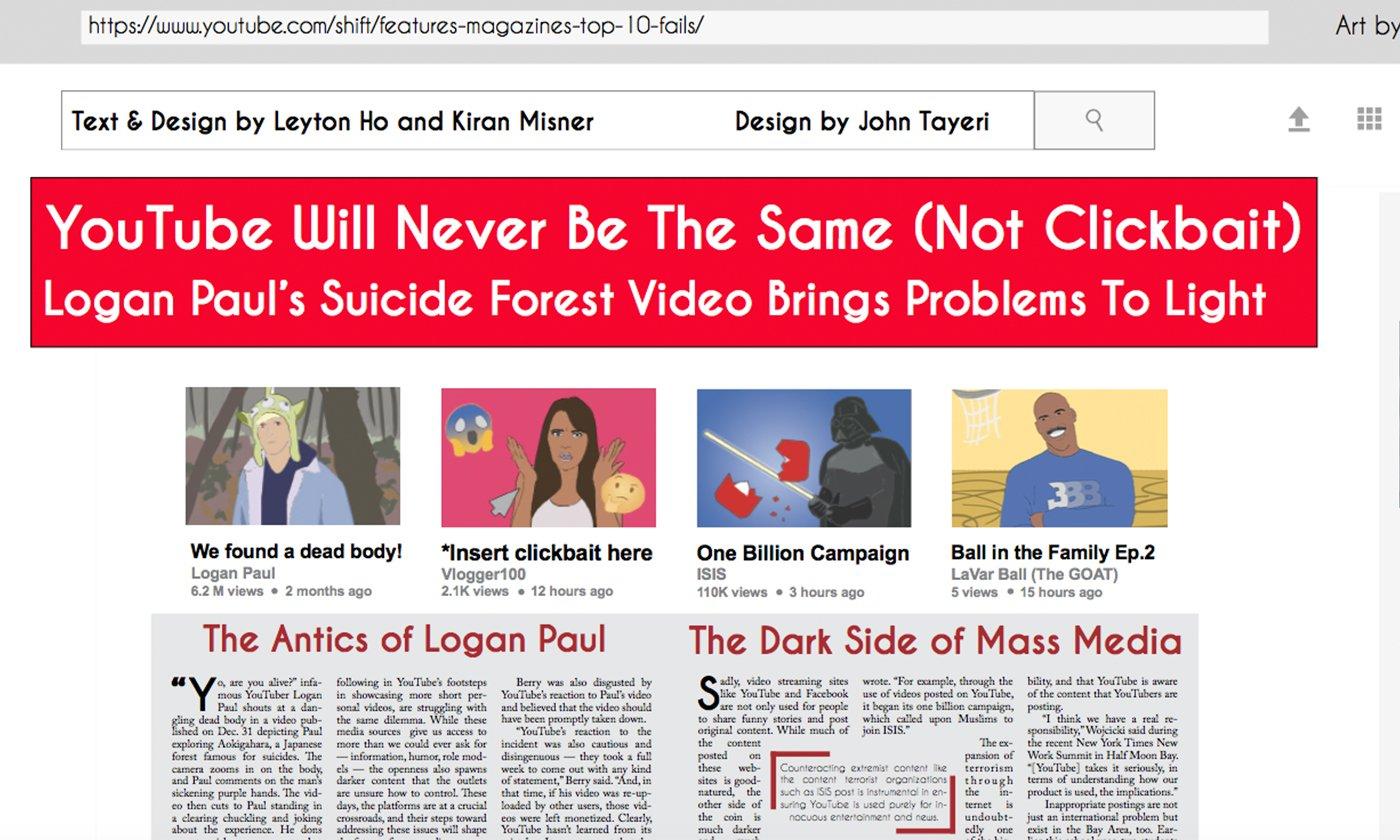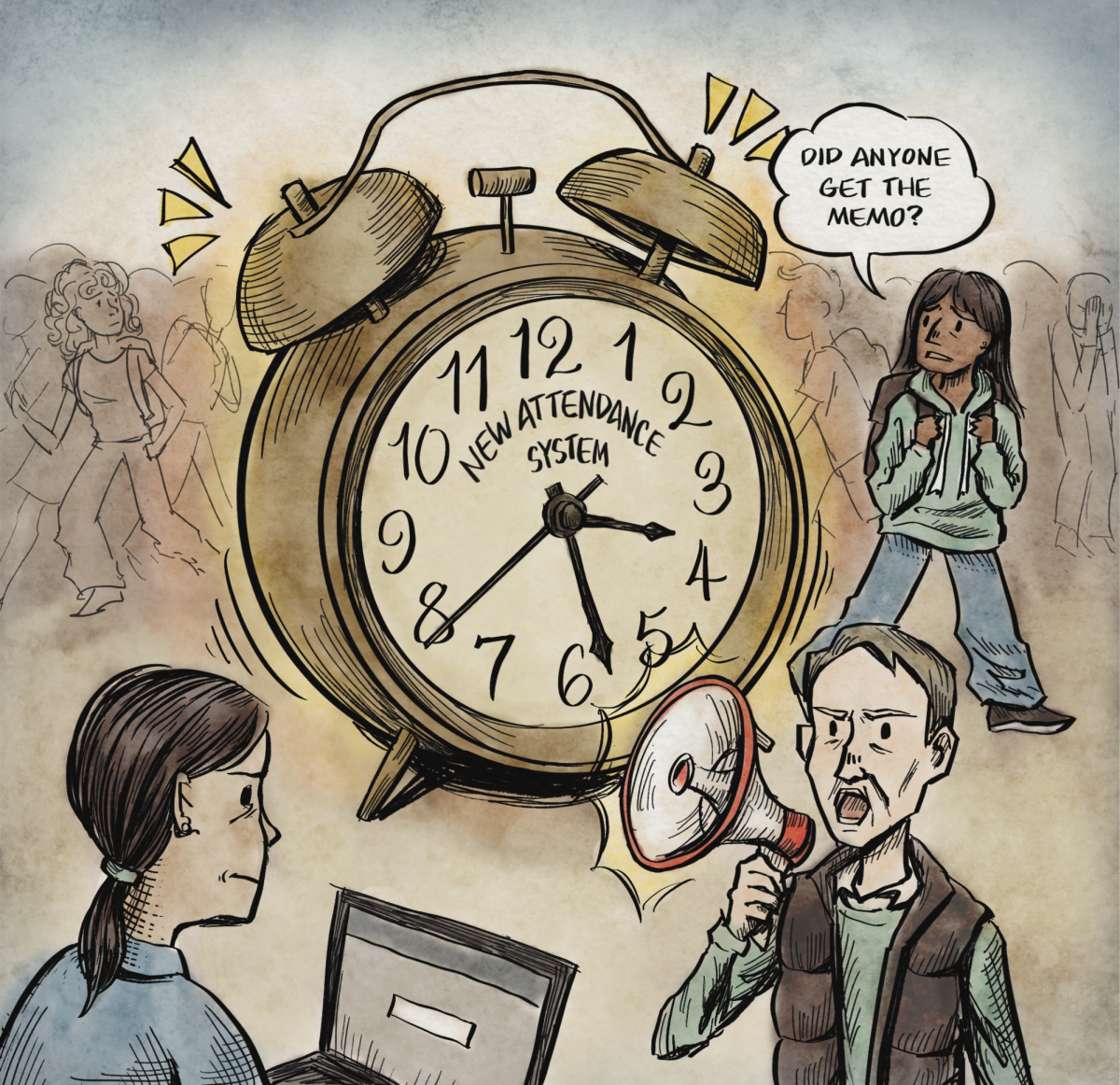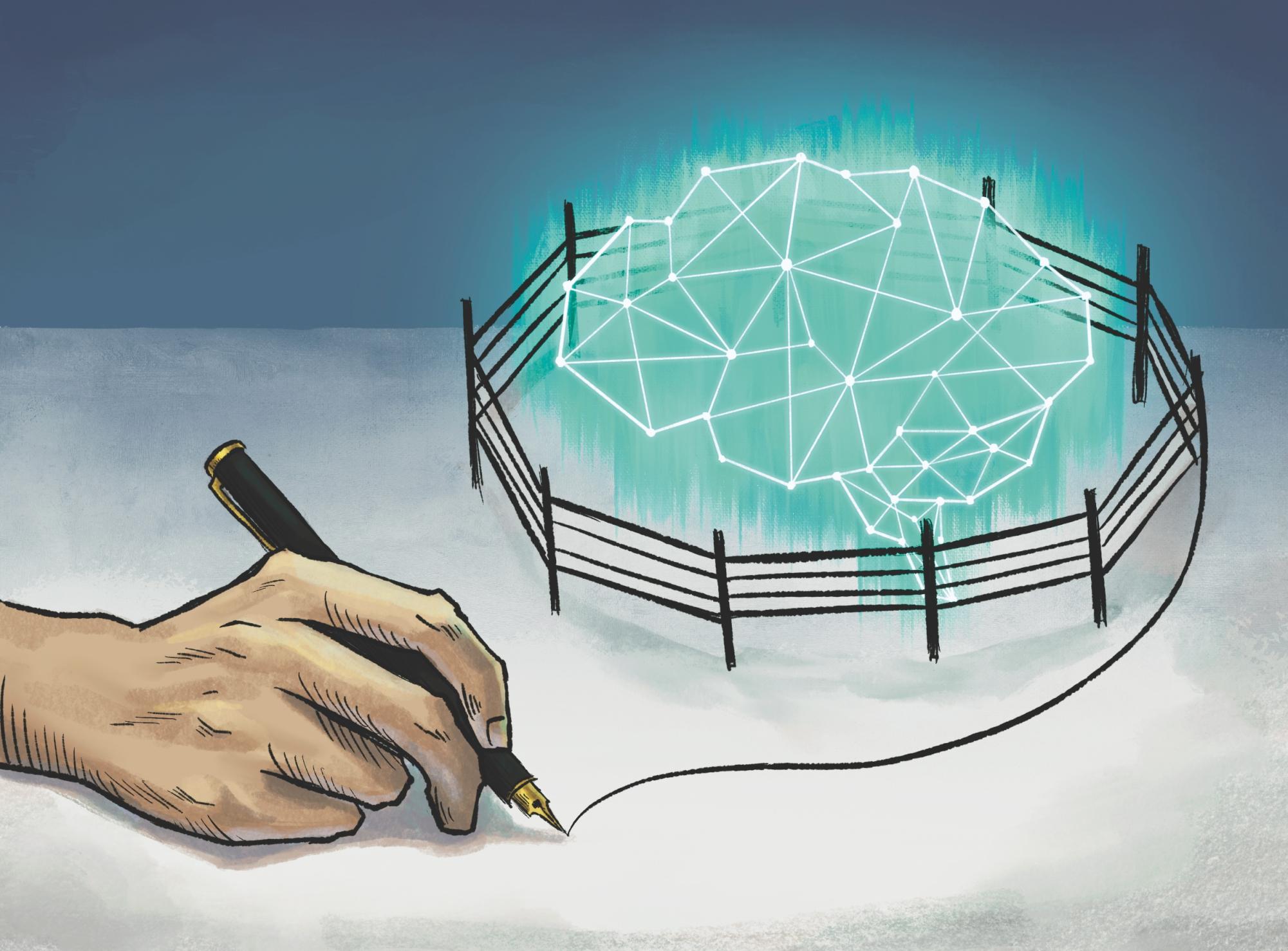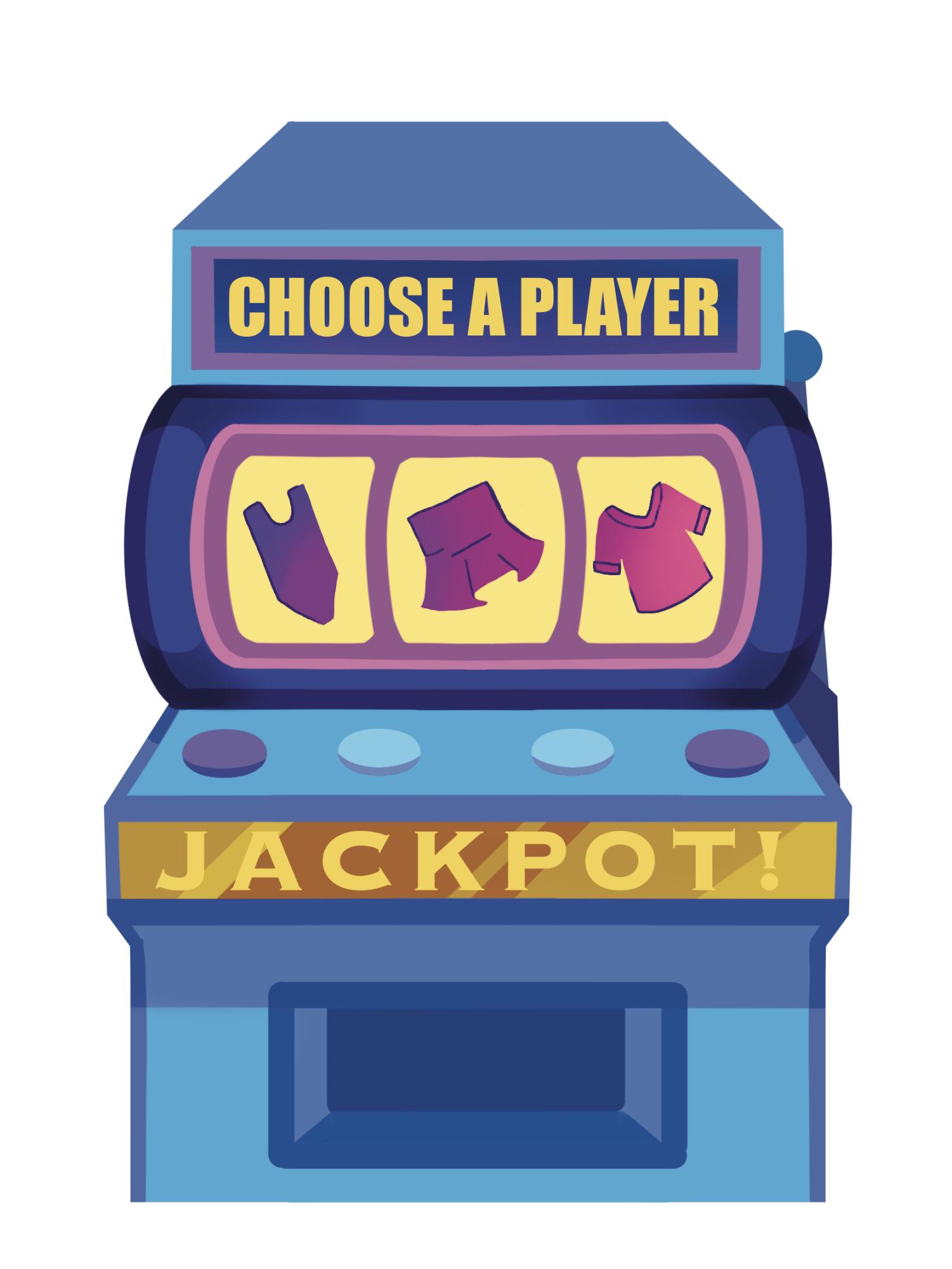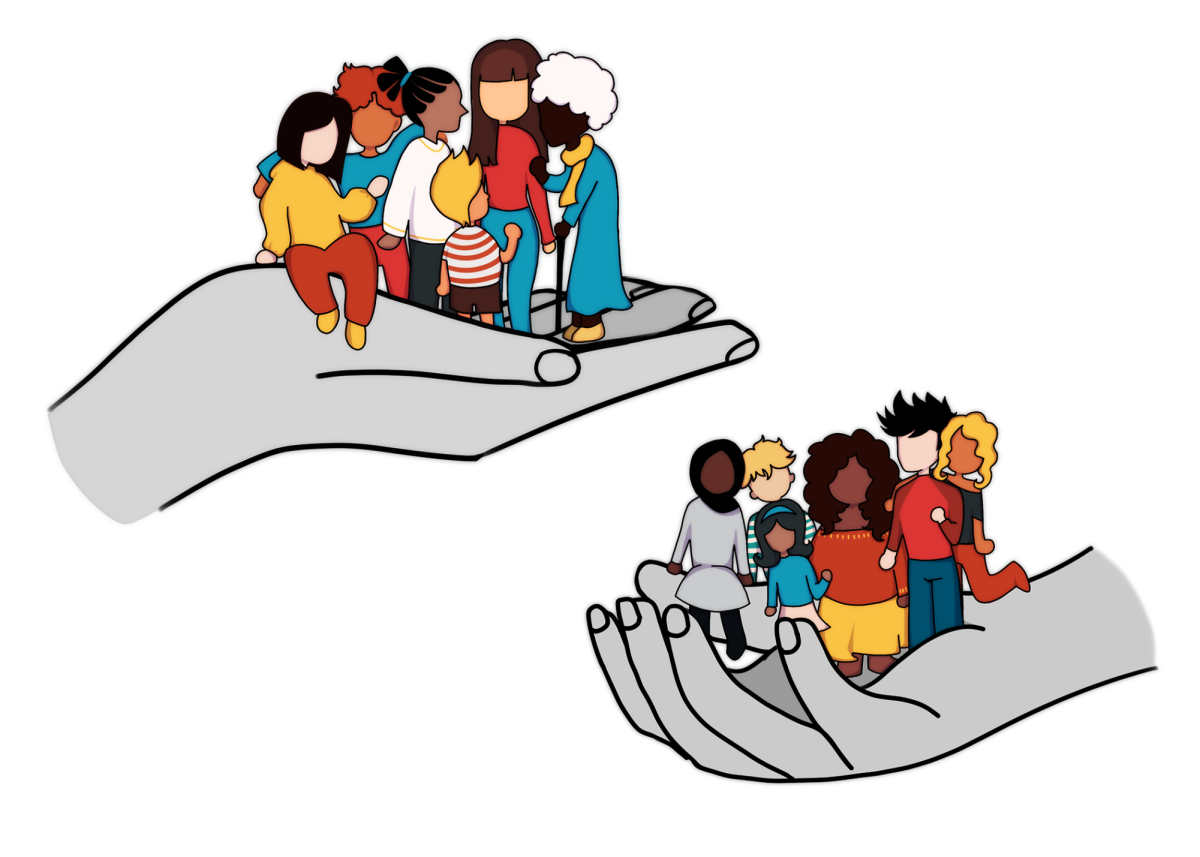[divider]The Antics of Logan Paul[/divider]
Yo, are you alive?” infamous YouTuber Logan Paul shouts at a dangling dead body in a video published on Dec. 31 depicting Paul exploring Aokigahara, a Japanese forest famous for suicides. The camera zooms in on the body, and Paul comments on the man’s sickening purple hands. The video then cuts to Paul standing in a clearing chuckling and joking about the experience. He dons a cartoonish green monster hat along with a loud Gucci jacket.
The scene is grotesque, disturbing, even inhumane. After all, what person in their right mind would document adventures into a Japanese forest known for suicide? What person would joke around about dead bodies, directly mocking suicide victims? What person would edit video footage of their endeavor and consciously decide to post it to over 15 million subscribers, many of them children?
Whatever the thought process behind it, Logan Paul’s suicide video marked a turning point not only for his career but also for YouTube as a whole. Paul’s video drew immense public criticism and has resulted in a larger discussion of YouTube’s policies toward inappropriate content. A delay in flagging the video and in punishing Paul for his wrongdoing has put YouTube under the spotlight, with the public anxious to see what actions the tech giant will take next.
But YouTube is not alone in its struggle to balance free speech with censorship online. Facebook and Snapchat, which are following in YouTube’s footsteps in showcasing more short personal videos, are struggling with the same dilemma. While these media sources give us access to more than we could ever ask for — information, humor, role models — the openness also spawns darker content that the outlets are unsure how to control. These days, the platforms are at a crucial crossroads, and their steps toward addressing these issues will shape the future of mass media.
YouTube hesitated at first. It wasn’t until Feb. 8, more than a month after the offensive Paul forest video was published that YouTube tweeted out, “In response to Logan Paul’s recent pattern of behavior, we’ve temporarily suspended ads on his channels.”
Some, including Paly junior Zoe Sid, feel this punishment is too minor and that Paul should be kicked off YouTube entirely.
“As a YouTuber I think you need to really think about your content before posting it,” Sid said. “As for YouTube, I think that type of behavior should be unacceptable and any creators that don’t comply should have their account removed immediately.”
Katherine Berry, a Gunn High school graduate and creator of the YouTube channel “Katherout” with over 115,000 subscribers, echoed Sid’s sentiments.
“I have personally lost loved ones to suicide, and for him to sensationalize this deeply serious place in Japan is intolerable. His absolute lack of empathy is predictable, but still ridiculous.”
Katherine Berry
Berry was also disgusted by YouTube’s reaction to Paul’s video and believed that the video should have been promptly taken down.
“YouTube’s reaction to the incident was also cautious and disingenuous — they took a full week to come out with any kind of statement,” Berry said. “And, in that time, if his video was re-uploaded by other users, those videos were left monetized. Clearly, YouTube hasn’t learned from its mistakes. It was apparent that the platform values Logan Paul’s contributions to the platform more than respect for viewers everywhere. YouTube should have immediately flagged his video like they do with actual clean content.”
On Jan. 2, two days after the original suicide forest video had been posted, Paul issued an apology.
“I should have never posted the video. I should have put the cameras down.”
Logan Paul
At the time, he exhibited remorse and claimed that he learned from his mistakes. He hadn’t. In a video posted on Feb. 5, Paul exclaimed, “No rat comes into my house without getting Tased” while shooting two dead rats with a Taser.
Paul isn’t the only YouTuber prioritizing views and subscribers without considering whether their content is suitable for all audiences. Given the monetary and social incentives for YouTubers to succeed, they aren’t going to be dissuaded unless YouTube punishes violators like Paul, sending a message to the rest of the YouTube community.
[divider]YouTube’s Culture Shift[/divider]
Over the past couple of years, YouTube’s culture has begun to shift toward more personal and dramatic videos. The phenomenon known as vlogging, when YouTubers document their lives, has overtaken the platform. Berry, having been uploading videos for six years, has witnessed this shift firsthand.
“When I started on YouTube, vlogging wasn’t cool,” Berry said. “To that end, I hid my channel in high school because I thought it was embarrassing. Now, when friends and coworkers discover I have a channel, they’re impressed and curious.”
YouTube’s shift towards vlogging is embodied by famous personalities such as Logan Paul. With millions of followers, many of them children and preteens, YouTubers like Paul have capitalized on the shift to vlogging by creating videos containing dramatic, often egregious content on a near daily basis. These videos are often accompanied by bold titles meant to draw in viewers, a technique dubbed “clickbait.”
“Clickbait exists for a reason,” Berry said. “Gone are the days where you can title a vlog ‘Hanging out with my best friends at XYZ’ and expect it to get any sort of high engagement.”
According to Berry, YouTubers use clickbait to draw in viewers.
“The data is in favor of clickbait. Those videos get better engagement for me.”
Katherine Berry
Eoin O’Kramer, a YouTuber who attended Paly for two years reiterated Berry’s statement. O’Kramer is the owner of the channel Pixeldip, boasting over 250,000 subscribers.
“As more YouTubers join the platform on the daily, one has to often resort to using clickbait in thumbnails and titles in order to get the attention of consumers,” O’Kramer said.
O’Kramer has experimented with a more subtle and less publicized form of clickbait: Shaping videos according to the current trends in pop culture.
“I ran a second channel briefly called PixPlays in which I wanted to experiment with how easy it would be to grow a channel by uploading coverage of Pokemon Sun & Moon by using moderate clickbait,” O’Kramer said. “I was able to get 30,000 subscribers and several million views in a couple of months. However, by clickbait I purely mean making videos consisting only of relevant topics, not misleading audiences into clicking on a video.”
With more and more competition for viewers, YouTubers are constantly looking for methods to generate more likes, views and subscribers.
Generally, the more extreme and dramatic the video is, the more people will watch it. This culture, while entertaining for viewers, can be detrimental, as in the case of Paul.
“I think YouTube has shifted away from the culture of young teens finding refuge in a platform where they belong, and more into a cult of fame and success. Young people aspire to be [famous] YouTubers because they get to travel for free, get free stuff, have beautiful Instagrams, etc. It’s unrealistic and damaging to prop up a lifestyle that is unattainable for most.”
Katherine Berry
[divider]The Dark Side of Mass Media[/divider]
Sadly, video streaming sites like YouTube and Facebook are not only used for people to share funny stories and post original content. While much of the content posted on these websites is good-natured, the other side of the coin is much darker and much more dangerous.
In recent years, terrorist groups like Islamic State of Iraq and the Levant (ISIS) have taken to sites like YouTube and Facebook as a way to internationally publicize their extremist message and to recruit people from around their world to join them.
Through videos of bombings and executions, ISIS was able to use social media to extend its influence far beyond the Middle East.
Imran Awan, an expert on Islamophobia and a professor at Birmingham City University in England, explained ISIS’ use of YouTube and Facebook as recruiting tools in his paper “Cyber-Extremism: Isis and the Power of Social Media.”
“ISIS have been using both platforms as magnets that have attracted thousands of views, comments, forums and posts. For example, through the use of videos posted on YouTube, it began its one billion campaign, which called upon Muslims to join ISIS.”
Imran Awan
The expansion of terrorism through the internet is undoubtedly one of the biggest issues that plagues mass media today; however, social media companies are using varying techniques in their quest to combat extremism.
For example, as of July 2017, YouTube launched a feature within its website that redirects certain buzzwords that signal someone is searching for extremist content to a YouTube-created playlist.
The playlist contains a list of videos that dispels myths about extremist viewpoints along with videos that promote anti-hate.
YouTube CEO Susan Wojcicki believes that introducing such features to stop dangerous content on the internet is all part of the company’s moral responsibility, and that YouTube is aware of the content that YouTubers are posting.
“I think we have a real responsibility,” Wojcicki said during the recent New York Times New Work Summit in Half Moon Bay. “[YouTube] takes it seriously, in terms of understanding how our product is used, the implications.”
Inappropriate postings are not just an international problem but exist in the Bay Area, too. Earlier this school year, two students from Moreau High School in Hayward, just a 30-minute drive from Paly, were expelled for videoing themselves and then posting a list of racist slurs. Even with the quick deletion of the video from Snapchat, the video had circulated around enough to the point where it could make a severe impact.
A weak or ineffective response towards these problems will result in the problems escalating and becoming more commonplace.
YouTube’s anti-hate redirect feature is a good start. Counteracting extremist content like the content terrorist organizations such as ISIS post is instrumental in ensuring YouTube is used purely for innocuous entertainment and news.
Editors’ Note: Susan Wojcicki is a daughter of The Campanile adviser Esther Wojcicki.
[divider]A New Wave of Platforms [/divider]
YouTube’s shift towards videos as a way to tell important stories and reach into the lives of both celebrities and everyday citizens has expanded to other video and social media platforms. Social media giants such as Facebook and Snapchat have created Facebook Watch and Snapchat Discover, respectively.
Facebook Watch is a recent addition to Facebook, the social media network that started in 2004. The feature focuses on presenting original content produced by both big names, such as LaVar Ball, the father of NBA player Lonzo Ball, with the show “Ball in the Family,” and normal people, like Jimmy Zhang with the show “Unfiltered Advice.” An avid user of Facebook Watch, Paly senior Miguel Moreno has enjoyed the feature since it was added last August, mainly due to the addition of the show “Ball in the Family,” a reality show following the Ball family. Moreno is a firm believer that shows on Facebook Watch are not solely for entertainment, but are something some producers are using primarily for marketing.
“Through ‘Ball in the Family’ I’ve seen Facebook Watch as a tool of marketing for the Big Baller Brand. Many of us know of LaVar’s wild and out-there statements, which have become a strong marketing tool when it comes to promoting Lonzo and Big Baller Brand, but ‘Ball in the Family’ is able to connect fans to the family on a whole other level.”
Miguel Moreno
While Facebook Watch aims to provide long-term content, Snapchat Discover has attempted to tackle a different side of the video industry — immediate news. Since Snapchat videos only last 24 hours before they disappear, Snapchat has used its Discover section to allow companies to publish daily news, videos and breaking stories. For example, Mashable publishes the newest happenings in the tech industry, while ESPN creates a daily “story” about the news in the world of sports.
Using stories that pop up during breaking news events, Snapchat Discover has been able to chronicle some of the biggest news stories in recent times, such as reactions to and interviews from people inside the Parkland High School shooting in Parkland, Fla. Snapchat has become a reliable source within the media, even to the point where young adults and teens have taken to it as a dependable news source.
“Snapchat Discover has interesting titles, more color, and interesting pictures that people can see before actually reading articles,” said junior Juan Aguila, who uses Snapchat Discover. “I was very much stunned when Snapchat started being a news source. I thought it was always just going to be a messaging platform and nothing more.”
Facebook Watch and Snapchat Discover are byproducts of our society, and have become more proactive in providing emotional response videos. Only time will tell whether these features on social media websites will endure; however, their recent success is an indicator of the shift sparked by YouTube in the media world. However, their modern-day success shows the shift caused by YouTube in the media world.
[divider]Aquarium Kids[/divider]
Paly junior Evan Baldonado’s AquariumKids story began with the 2012 Duveneck Elementary School Harvest Carnival.
The carnival offered goldfish as the prize for winning a game.
As an event populated by young children, the game was very popular and many goldfish were given out. However, these children and their families were ill equipped to care for the goldfish and many passed away shortly after the carnival.
When the 2013 Duveneck Harvest Carnival rolled around, Baldonado was prepared, giving out a care sheet for the goldfish to all new owners.
“People didn’t know how to care for their goldfish properly and a care sheet provided the information that they needed in order to do a better job,” Baldonado said.
This care sheet grew into a website — AquariumKids.com — and, eventually, a YouTube channel.
“I created my channel to complement my website, AquariumKids.com. For me, YouTube is not my sole venture; rather it is a way for me to expand the online presence of AquariumKids.”
Evan Baldonado
The channel boasts over 2,700 subscribers and has a video with over 300,000 views.
For Baldonado, growing his channel has been a experiment, and he attempted a plethora of different strategies to attract more viewers before definitively settling on one.
“The best way to grow a channel is to find a niche and then to upload content consistently,” Baldonado said. “I have also found that channel growth speeds up exponentially as you become more well-known in what some people call the ‘snowball effect.’ While strategies such as ‘sub for sub’ may provide some level of success, they are not sustainable in the long run. Instead, find something that makes you unique and separates you from others. For me, that was creating top 10 videos about fish.”
AquariumKids’ top 10 countdown videos are among the most viewed on the channel, showing the validity of Baldonado’s method.
“Right now, of my top 20 videos in terms of total view count, top 10 (or top 5) style videos account for 17 of them,” Baldonado said.
In keeping up with YouTube’s changing culture, Baldonado has witnessed the effects of YouTube’s monetization on smaller channels.
“In light of recent events, YouTube announced that it will now require 4,000 watch hours and 1,000 subscribers before someone is eligible to [make money],” Baldonado said. “It will also retroactively apply these new criteria to existing accounts and many old accounts will no longer be able to earn money from their channels. I have seen a significant backlash from smaller aquarium YouTubers who will be impacted.”
The increasing restrictions YouTube is placing on its creators does not take away the vibrant community and positive benefits the platform offers.
“YouTube has definitely had a positive influence on my life. It has taught me that people really care about what you have to say and that one person can make an impact on the lives of many others.”
Evan Baldonado

